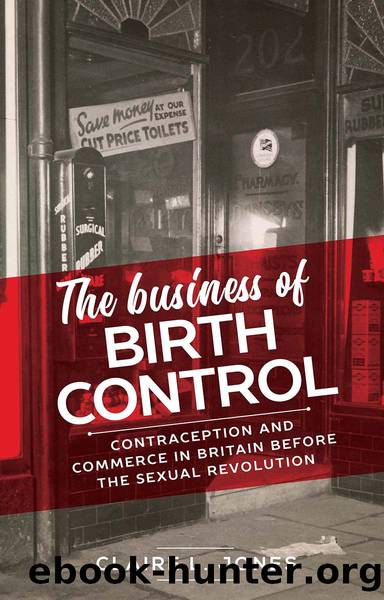The business of birth control by Claire L. Jones

Author:Claire L. Jones
Language: eng
Format: epub
Publisher: Manchester University Press
4
âAs honest as business permitsâ: medical practitioners, birth control clinics and contraceptive efficacy
Following the passing of Dawsonâs Contraceptives (Regulation) Bill in the House of Lords in 1934, Dr Edward F. Griffith (1895â1987), member of the medical committee of the National Birth Control Association and medical officer at the Aldershot birth control clinic, wrote a statement to help medical practitioners navigate the contraceptive market. As the Association medical committeeâs proposed response to the Bill, Griffithâs statement aimed to provide practitioners with guidance on the many contraceptive brands available from chemists, ârubber shopsâ, garages and slot machines and enable them to distinguish between those that were reliable and those that were not. It was often quite impossible, Griffith argued, âfor the medical practitioner to decide on the relative merits of these different articles, unless he has considerable knowledge of contraceptive technique, and it is even more impossible for the ordinary member of the public to make any satisfactory decision whatsoeverâ. While stating that it was not the function of the committee to determine whether legislation was the most appropriate way to remedy the âmost unsatisfactoryâ state of the market, Griffith was explicit about the fact that âsome authoritative action is necessaryâ. To Griffith, âauthoritative actionâ meant that medical practitioners needed to be more proactive in seeking out education and training in contraceptive technique, so they could replace businesses in dominating contraceptive supply. In the absence of any formal medical education in birth control, such education and training could only be obtained at the growing number of clinics operating under the National Birth Control Association.1
Although seemingly never published or circulated beyond the committee, Griffithâs statement encapsulates how the National Birth Control Association (and the Family Planning Association, as it became from 1939), and the increasing numbers of medical practitioners interested in birth control, sought to incorporate birth control into the profession by the mid-1930s and in so doing, how they sought to dominate the contraceptive market. The medicalisation of birth control had been the aim of some individuals since at least the late nineteenth century, but it was only from the interwar period that medical practitioners and nurses were more openly able to disseminate birth control information and contraceptives through face to face consultation.2 While most medical practitioners in the early 1920s were far from convinced that birth control was within the realm of their expertise, Dawson stated to Stopes that âknowledge as to the applications of birth control should be conveyed by doctors to their patientsâ.3 With the amalgamation of all five clinic-running organisations under the National Birth Control Council (which became the National Birth Control Association) and implementation of the Ministry of Healthâs sanction 153/MCW in 1930, medical provision of contraceptive advice to women whose health would be at risk from pregnancy expanded to local authority mother and infant welfare clinics, where married women who typically already had children could access contraceptives to prevent further pregnancies.4 Nurses, medical practitioners and other clinic workers increasingly became seen as gatekeepers of birth control
Download
This site does not store any files on its server. We only index and link to content provided by other sites. Please contact the content providers to delete copyright contents if any and email us, we'll remove relevant links or contents immediately.
| Anthropology | Archaeology |
| Philosophy | Politics & Government |
| Social Sciences | Sociology |
| Women's Studies |
Cecilia; Or, Memoirs of an Heiress — Volume 1 by Fanny Burney(32412)
Cecilia; Or, Memoirs of an Heiress — Volume 3 by Fanny Burney(31822)
Cecilia; Or, Memoirs of an Heiress — Volume 2 by Fanny Burney(31801)
The Great Music City by Andrea Baker(31249)
We're Going to Need More Wine by Gabrielle Union(18951)
All the Missing Girls by Megan Miranda(15491)
Pimp by Iceberg Slim(14318)
Bombshells: Glamour Girls of a Lifetime by Sullivan Steve(13952)
Talking to Strangers by Malcolm Gladwell(13185)
Norse Mythology by Gaiman Neil(13169)
Fifty Shades Freed by E L James(13145)
For the Love of Europe by Rick Steves(12641)
Mindhunter: Inside the FBI's Elite Serial Crime Unit by John E. Douglas & Mark Olshaker(9160)
Crazy Rich Asians by Kevin Kwan(9147)
The Lost Art of Listening by Michael P. Nichols(7388)
Enlightenment Now: The Case for Reason, Science, Humanism, and Progress by Steven Pinker(7163)
The Four Agreements by Don Miguel Ruiz(6597)
Bad Blood by John Carreyrou(6519)
Weapons of Math Destruction by Cathy O'Neil(6116)
